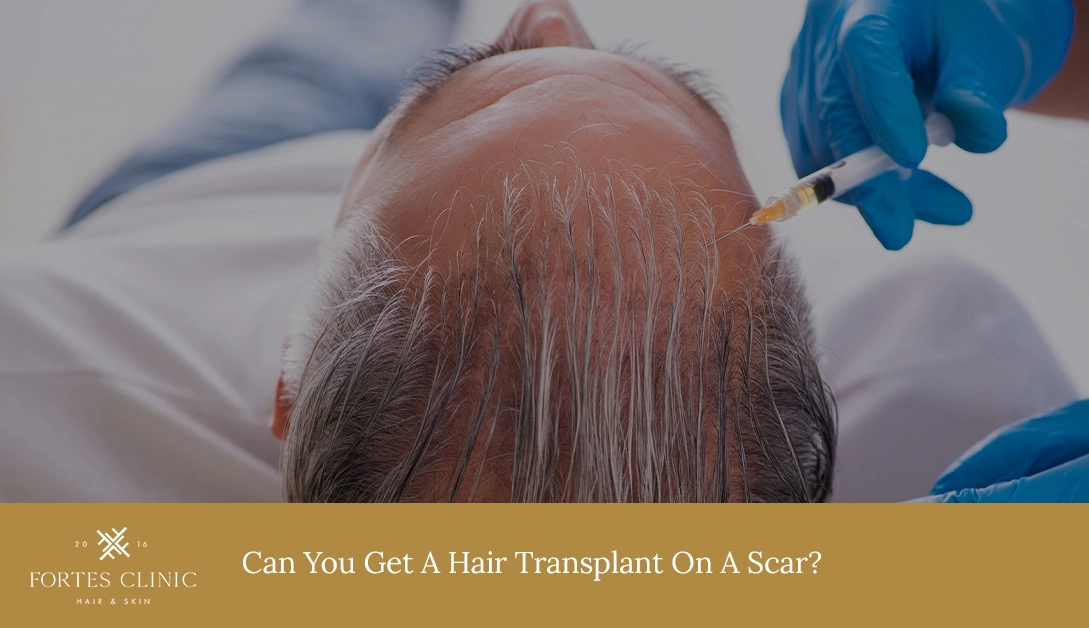Hair loss is a common concern, but when it occurs on scarred areas of the scalp, the challenges become more complex. Whether from injury, surgery, or a medical condition, scars can leave permanent marks on the scalp that disrupt natural hair growth. The good news is that hair transplants on scar tissue are possible. But, how effective are they? What factors influence success? In this article, we’ll explore whether you can get a hair transplant on a scar and what you should expect if you choose this route.
Understanding Scarring and Hair Loss
Not all scars are the same. Different types of scars may respond differently to hair transplants, and understanding the nature of your scar is crucial.
- Hypertrophic Scars: These are raised, red scars that often remain within the boundaries of the original wound. While they may flatten over time, they can cause changes to the texture and elasticity of the skin.
- Keloid Scars: Keloid scars are similar to hypertrophic scars but tend to extend beyond the wound area. They can grow over time and may be more resistant to treatments, including hair transplants.
- Atrophic Scars: Atrophic scars are depressed scars that sit below the surrounding skin level. They are often the result of conditions like acne or chickenpox and can present challenges for achieving even hair growth.
- Traumatic vs. Surgical Scars: Scars can arise from accidents (traumatic) or medical procedures (surgical). Surgical scars, such as those left after a facelift or previous hair transplant, can often be easier to treat because they are more predictable in terms of skin quality.
How Scarring Affects Hair Growth
Damage to Hair Follicles
Scarring can damage or destroy hair follicles, which are responsible for growing hair. Once a follicle is damaged beyond repair, it no longer produces hair, leaving a bald or thin area on the scalp.
Reduced Blood Supply
Scars often have a diminished blood supply compared to normal skin. Hair follicles need a healthy blood supply to thrive, so this reduced circulation can impact the success of a hair transplant.
Hair Transplantation Overview
A hair transplant involves moving hair follicles from one part of the body (usually the back or sides of the head) to a bald or thinning area.
FUE (Follicular Unit Extraction)
FUE involves removing individual hair follicles and transplanting them to the scarred area. This method leaves minimal scarring and allows for precise placement of follicles.
FUT (Follicular Unit Transplantation)
FUT involves removing a strip of skin with hair from a donor area, dissecting it into individual follicular units, and transplanting them. This option may be less ideal for scar tissue due to the larger size of grafts.
Can You Transplant Hair on Scar Tissue?
Yes, hair can be transplanted onto scar tissue, but the success rate depends on several factors, including the type and age of the scar, its blood supply, and the expertise of the surgeon.
Why It’s Different from Normal Scalp Transplants
Scar tissue has reduced elasticity and blood flow, which can affect how well the transplanted follicles take root and grow. In some cases, additional treatments may be required to improve blood supply before a transplant.
Factors That Influence Hair Transplant Success on Scars
- Scar Size and Location: Smaller scars or those in less noticeable areas may respond better to hair transplants than larger, more extensive scars. Additionally, scars near the hairline or crown may pose greater challenges.
- Skin Thickness and Elasticity: Scar tissue is often thicker or thinner than surrounding skin. These variations can affect how easily hair follicles can be transplanted and how well they take root.
- Blood Supply to the Scarred Area: Since scar tissue often has limited blood flow, the surgeon will assess whether there is sufficient circulation to support new hair growth. In some cases, treatments to improve blood flow may be required.
- Health and Condition of Donor Hair: Healthy, strong donor hair is essential for a successful transplant. The more resilient the donor follicles, the better they will withstand the conditions of scar tissue.
- Expertise of the Surgeon: The skill and experience of the surgeon play a critical role in the success of a hair transplant on a scar. An experienced surgeon will understand the complexities of scar tissue and use techniques that maximise success.
Hair Transplant Techniques for Scars
FUE on Scar Tissue
Advantages
FUE offers a minimally invasive option for scar tissue. It leaves tiny, almost invisible marks and allows for greater precision in placing hair follicles.
Limitations
FUE may require more sessions to achieve the desired density on scar tissue. It can also be more difficult to achieve even results compared to non-scarred skin.
FUT on Scar Tissue
Advantages
FUT can transplant a larger number of grafts in one session, which may be beneficial for larger scars. It’s often recommended for those with extensive scarring.
Limitations
FUT leaves a linear scar, so it may not be suitable for those who prefer to wear their hair very short. It may also be less effective for scars with poor blood supply.
Other Methods of Enhancing Transplant Success
- PRP Therapy (Platelet-Rich Plasma): PRP involves injecting your own blood plasma, which is rich in growth factors, into the scarred area to encourage healing and improve blood supply before or after a transplant.
- Scalp Micropigmentation (SMP): SMP involves tattooing small dots on the scalp to mimic the appearance of hair follicles. This can be a non-surgical alternative or complement to a hair transplant on scars.
- Stem Cell Therapy: Stem cell treatments are still experimental but show promise in regenerating hair growth and improving the condition of scar tissue.
Expected Results and Recovery
Hair Growth Timeline After Transplant on Scar
After the transplant, the scarred area will need time to heal. Expect some redness, swelling, and scabbing for the first few weeks.
It’s normal for transplanted hair to shed within the first few weeks. This doesn’t mean the procedure has failed; new growth will typically begin a few months after the shedding phase.
Most patients will see significant hair growth within 6 to 12 months. Hair in scarred areas may take longer to reach full density than in non-scarred areas.
Recovery Tips and Aftercare
After surgery, it’s important to follow the surgeon’s care instructions. Keeping the area clean and avoiding excessive touching or pressure on the scar is key.
Scar tissue is more prone to infection, so take care to avoid scratching the area. Follow the recommended aftercare routine to minimise complications.
Risks and Challenges of Hair Transplant on Scars
- Lower Graft Survival Rate: Hair follicles transplanted onto scar tissue have a lower survival rate compared to healthy skin. However, with the right techniques, success rates can be improved.
- Increased Risk of Infection or Complications: Scar tissue is more sensitive and prone to complications. Working with an experienced surgeon is essential to minimise risks.
- Unpredictable Hair Growth: Hair may grow less evenly on scar tissue than on unscarred areas, and multiple sessions may be required to achieve the desired result.
Alternatives to Hair Transplants on Scars
Non-Surgical Options
- Scalp Micropigmentation (SMP): SMP can be an effective alternative for covering scars without surgery. The results are immediate, though not permanent, and the procedure is non-invasive.
- Hair Systems or Wigs: For larger scars or those not suited to transplantation, hair systems or wigs can offer a more immediate and non-invasive solution.
Conclusion
Hair transplants on scars are not only possible, but they can also produce impressive results with the right approach. Success depends on the type of scar, the quality of the donor hair, and the expertise of the surgeon. For those struggling with scarring on the scalp, it’s worth considering a consultation with a specialist to explore your options. Whether you choose a transplant, non-surgical alternatives, or a combination of treatments, there are solutions available to restore confidence and improve appearance.
Got any questions? Get in touch with our friendly team today and we’ll answer any queries you may have. Ready to get started? Book your consultation with us online today!



